What to see in Almuñécar
About 30 minutes by bus from Nerja, Almuñécar is a seaside community in the Costa Tropical in Granada province.
We decided to come here for a daytrip, mainly to see the sights (principally the Castillo de San Miguel – the fortress sitting atop the hill overlooking the town). But we also wanted to see how Almuñécar compares to Nerja.
Almuñécar’s History
Almuñécar’s history dates back to the Phoenicians (whose origins are in the Eastern Mediterranean in present-day Lebanon). They founded Almuñécar in the 8th century BC and were the first to build a fort where San Miguel Castle sits today. The Phoenicians were followed by the Carthaginians (from Carthage in modern day Tunisia) in the 6th century BC.
When BC turned to AD, the Roman Empire controlled much of the Iberian peninsula. In 49 AD Almuñécar was named “Sexi Firmun Julium” and to this day the inhabitants of Almuñécar are referred to as Sexitanos. Almuñécar in fact still has remains of Roman Aqueducts in various parts of town as well as of a large fish salting factory (in Majuelo park right below the Castle). The export of “garum” (a fermented fish condiment used in Roman cooking) was the main industry and accounted for much of the economic success of the town during Roman times.
By around 700 AD the Visigoths (Barbarians from present day Bulgaria and Serbia) sacked most of the Roman Empire, Almuñécar included. Fish paste production stopped.
The Moors conquered Spain (and Almuñécar) in 711 AD. The name ‘Al-Munekab’ refers to ‘a fortress on the hill surrounded by mountains’. The town was under Muslim rule for over 700 years until the Christian conquest in 1489.
All to say that Almuñécar is the site of a lot of history.
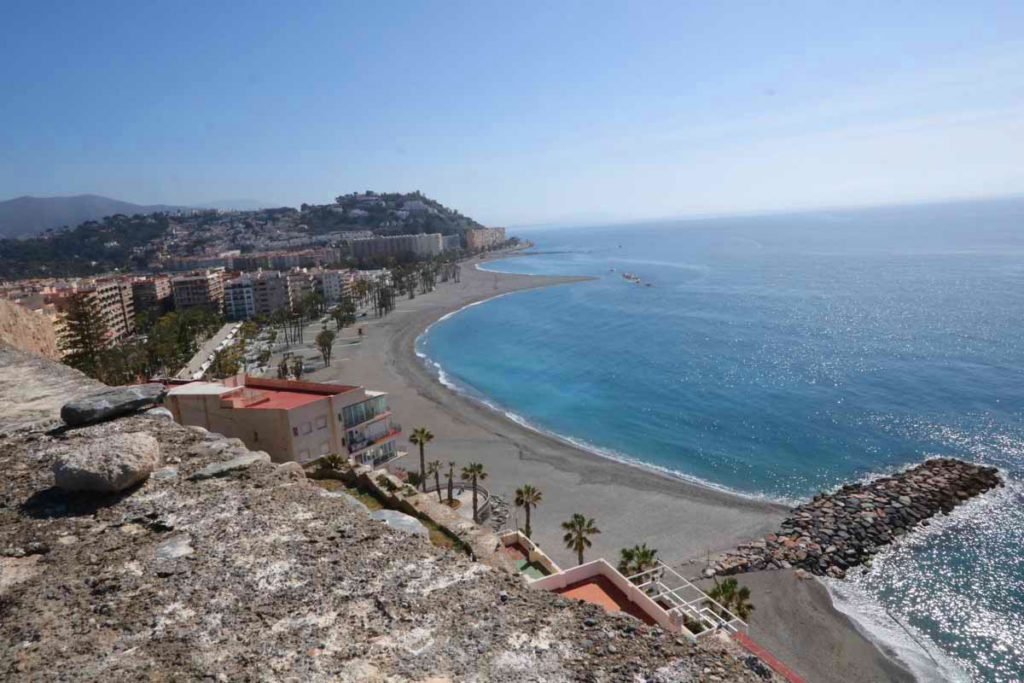
What to See in Almuñécar
Castillo de San Miguel
The sightseeing highlight in Almuñécar is the Castillo de San Miguel. It is not that big and its interior is not the best preserved – but the views are spectacular and the history alone makes it worth a visit.
The site, on the top of a hill overlooking the town and the bay, was always (since the founding of the city by the Phoenicians) the location of fortifications of some sort. Cisterns remain from the Phoenician period and you’ll see some walls, cisterns, and remains of tombs from the Romans. But most of the structure that you see today was built in the Moorish period. In the 16th century, under the control of the Catholic King Ferdinand, more was added including the moat, the drawbridge and the front entrance with its four round towers.
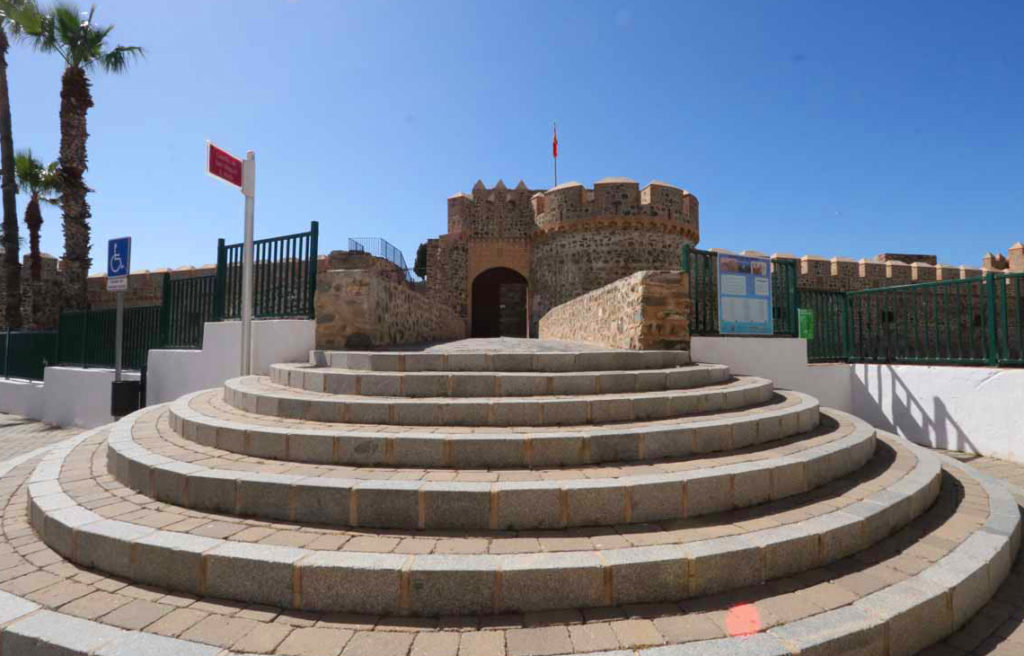
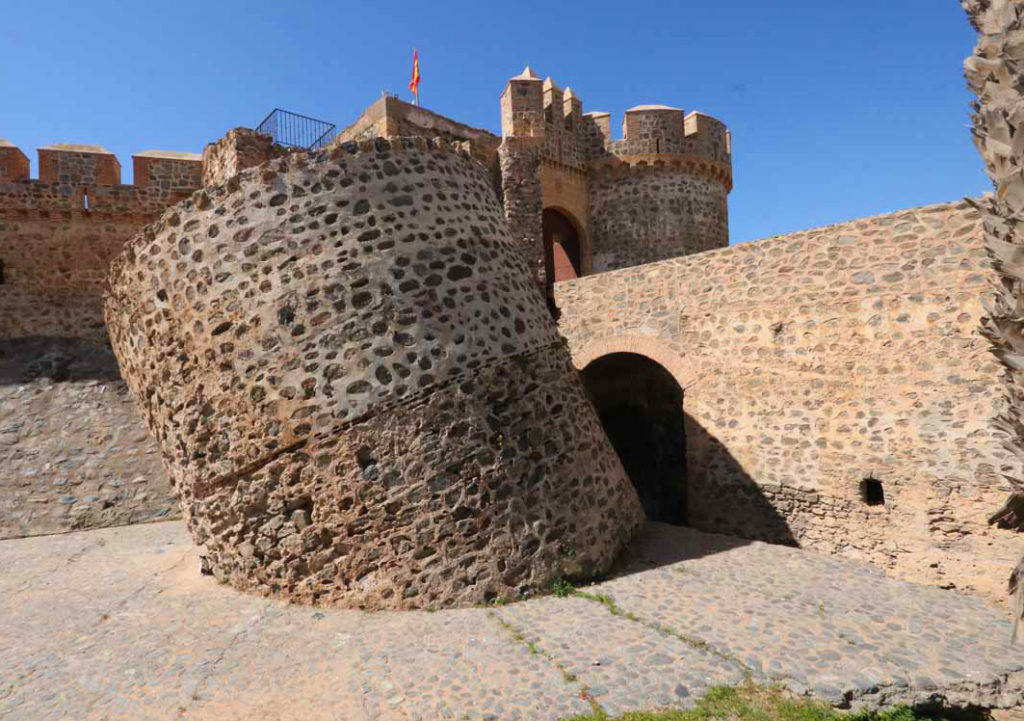
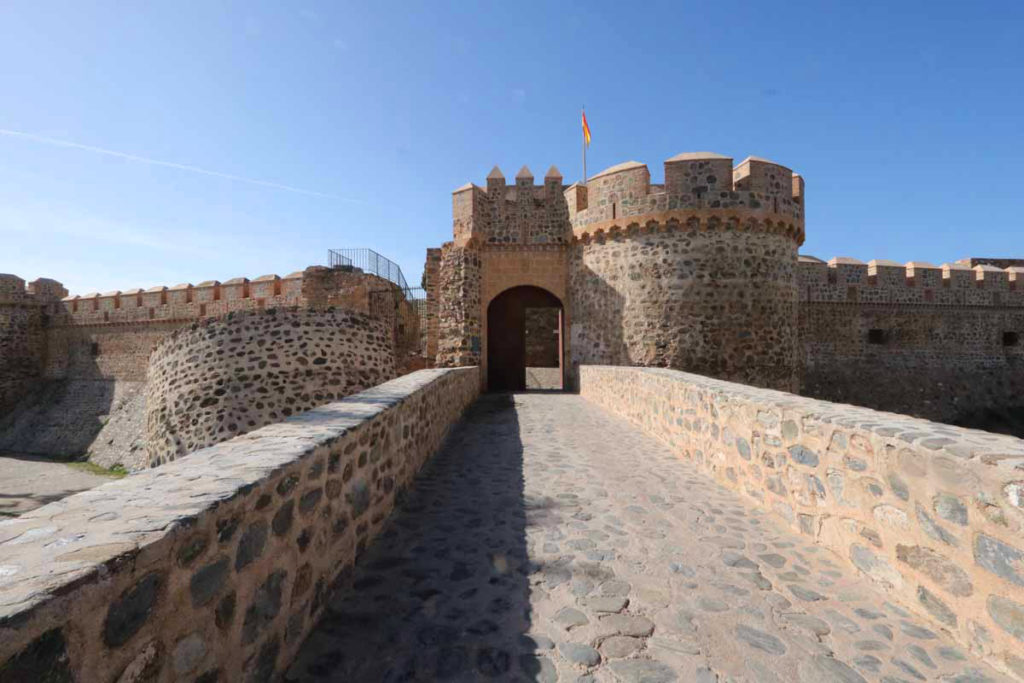
You’ll notice the leaning, collapsed tower on the left when you enter the fortress. This was the result of shelling from the British during the Spanish War of Independence.
Cost to see the castle: 4 Euros as of March 2023 (but note that it also includes the Archaeological Museum that I cover below).
More on Castillo de San Miguel here.
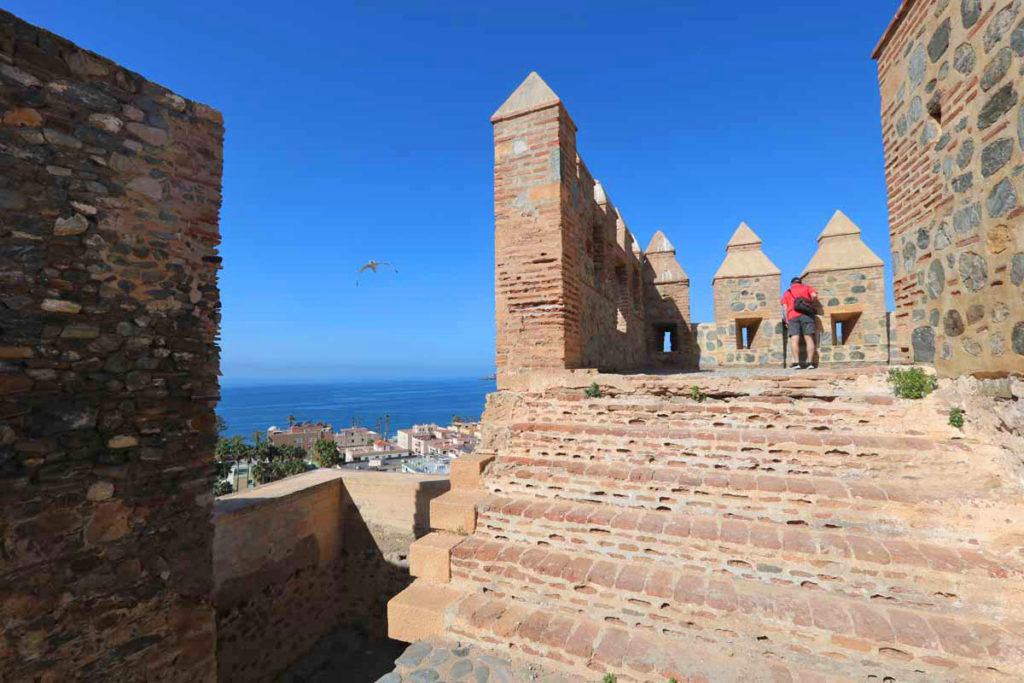
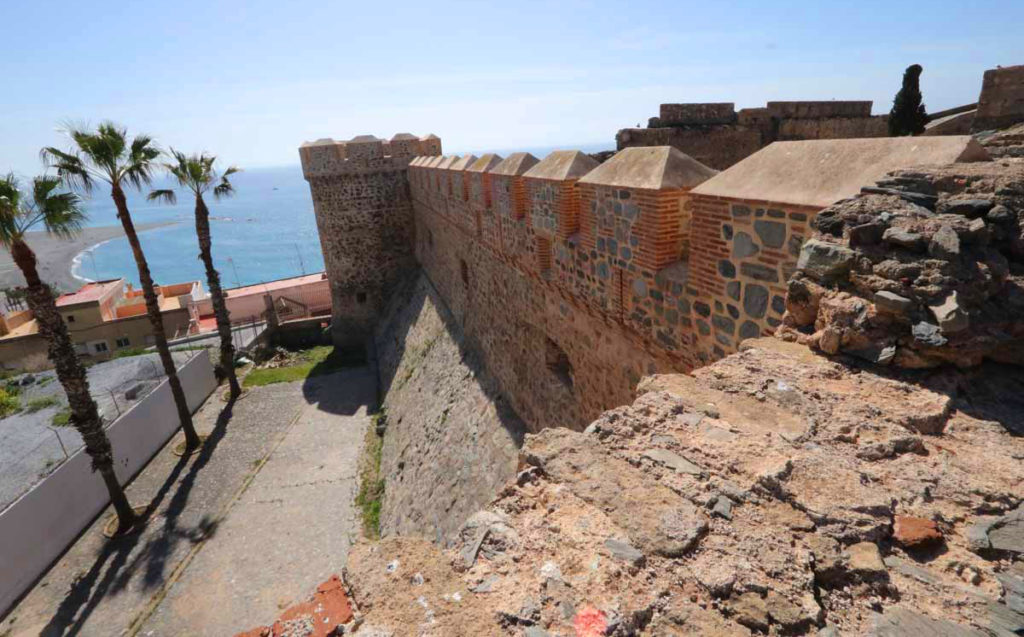
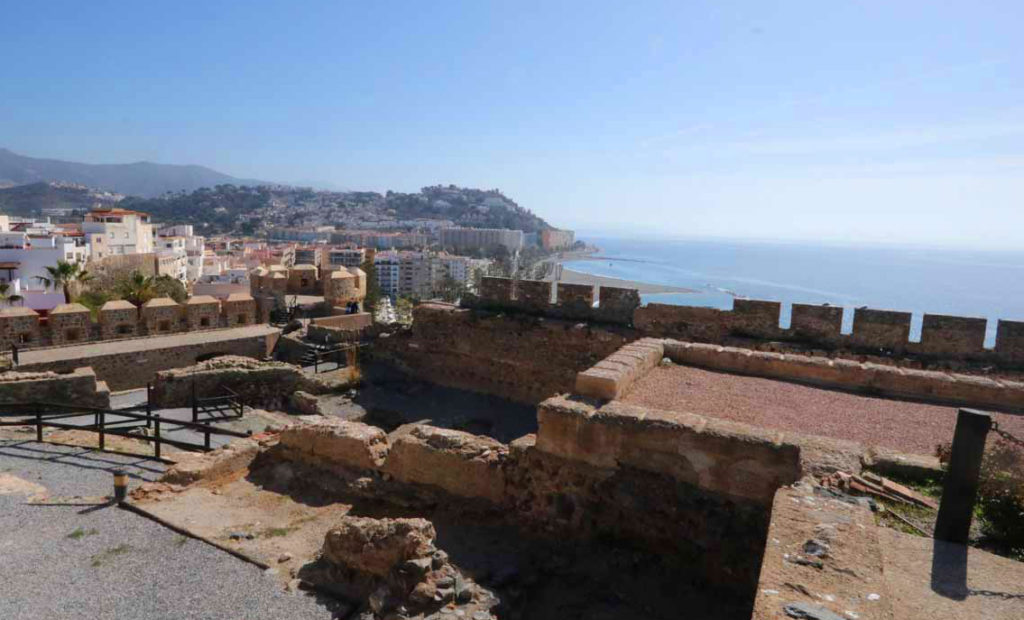
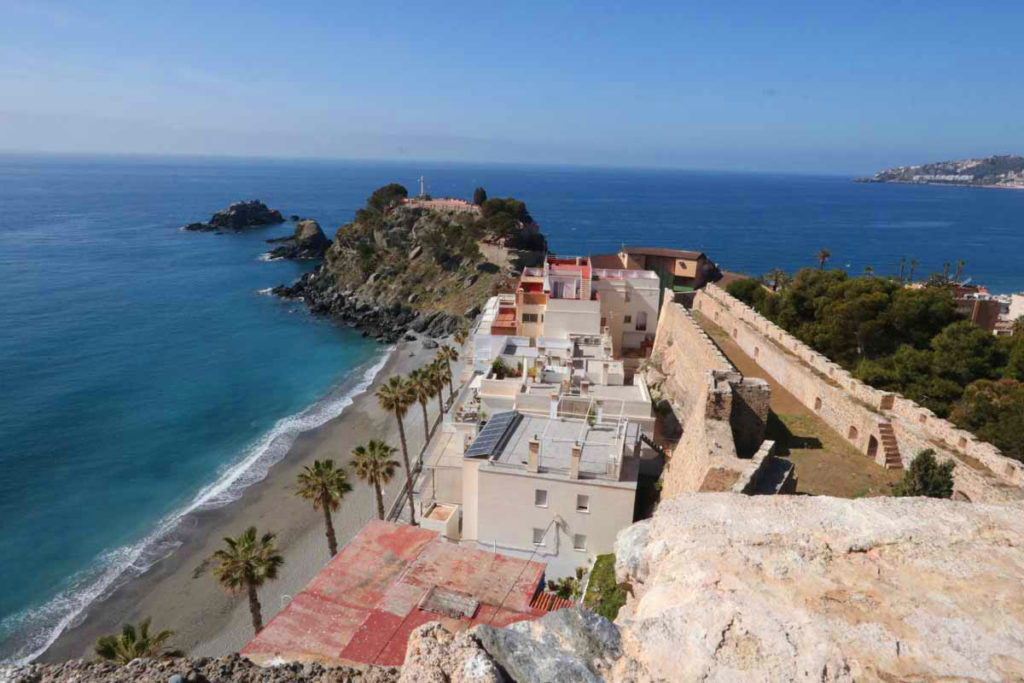
Archaeological Museum Cueva de Siete Palacios
Ie. “Cave of 7 Palaces”
A 5-minute walk from the Castle and included in the entry fee of the Castle.
This museum is located in what was the basement of a Roman palace which dates back to the 1st century AD.
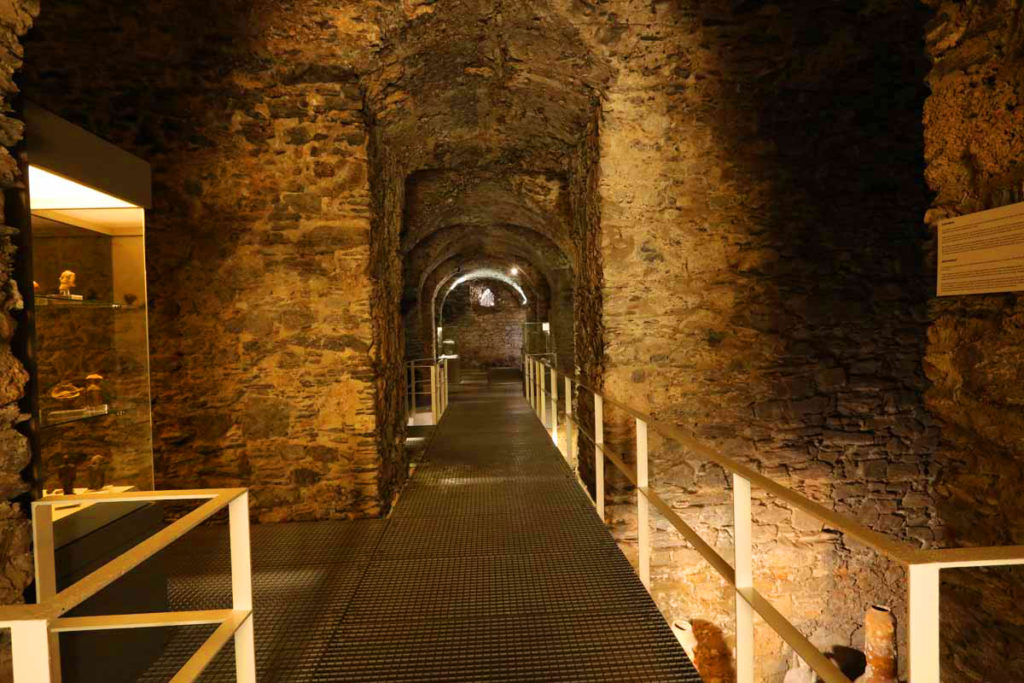
There wasn’t much usable land in the old town at the time (there still isn’t. The center of Almuñécar is quite built up) so the Romans decided to create space by building ‘terrasses’ on top of existing structures using arches and vaults. These vaults created a dome-like effect which looked like caves, the origins of the name of the museum.
Inside the museum you’ll see lots of artifacts from the different periods of the town’s history. Just as interesting is the structure of the building itself.
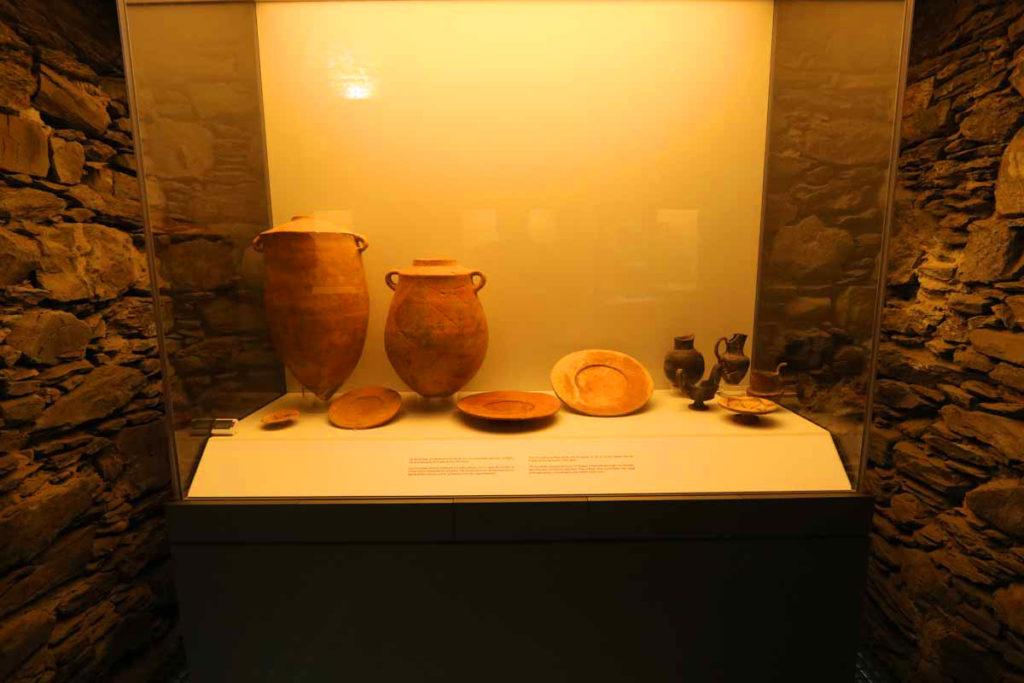
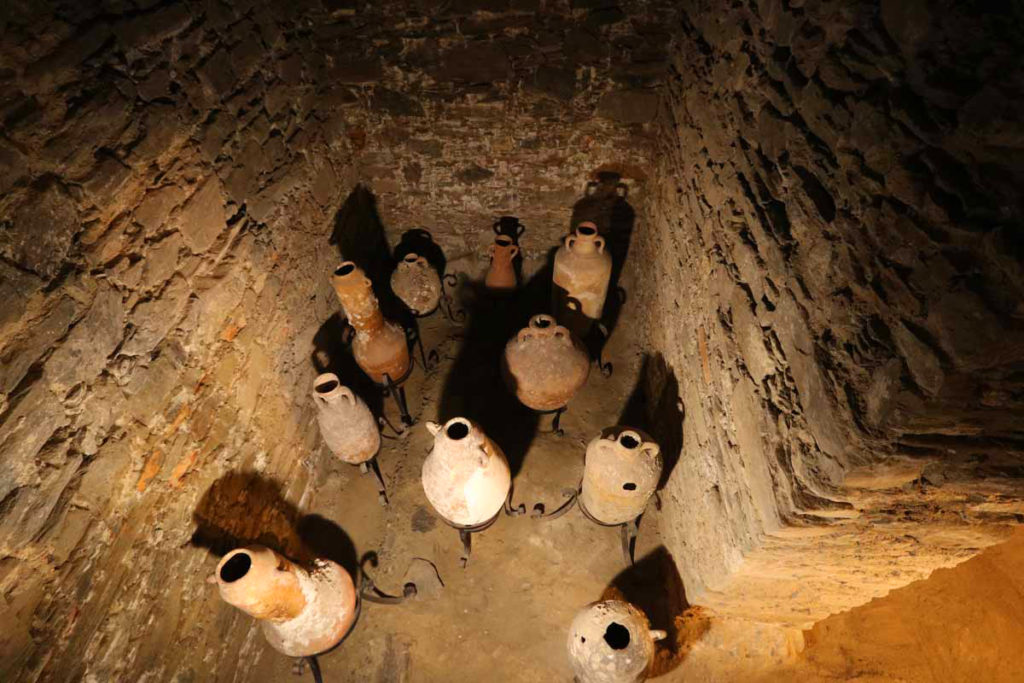
Peñón del Santo
We loved this rocky outcrop sticking out into the bay. Access to it is free – a steep climb up some stairs and ramps, pine trees lining the way (the smell of pine trees reminding of us Marjan hill in Croatia). Up at the top you get fantastic views of the city, the castle, and far off views of mountains. Magical.
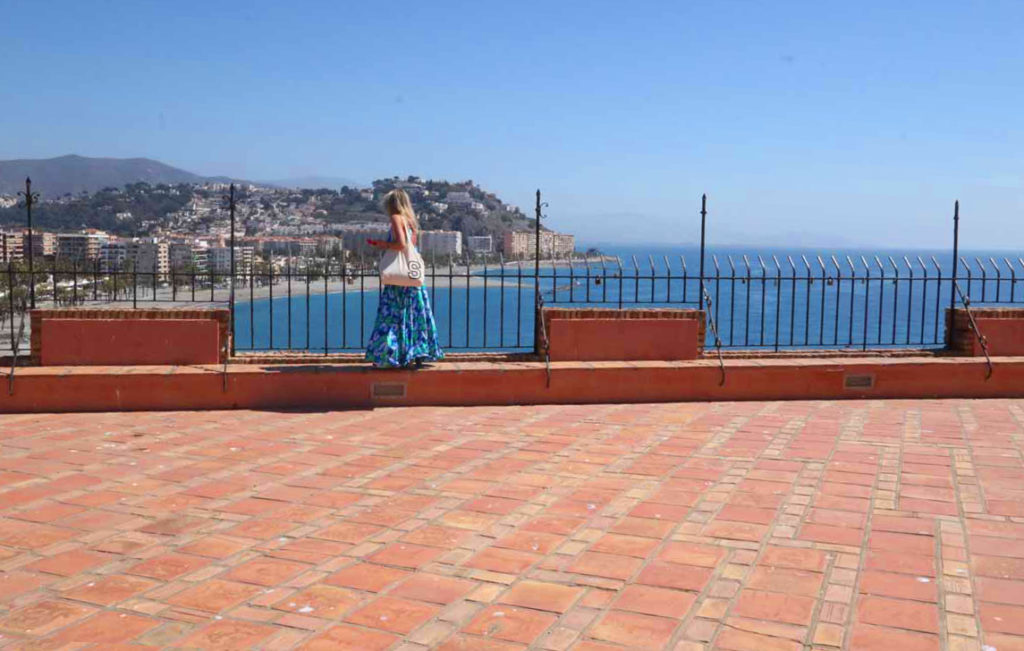
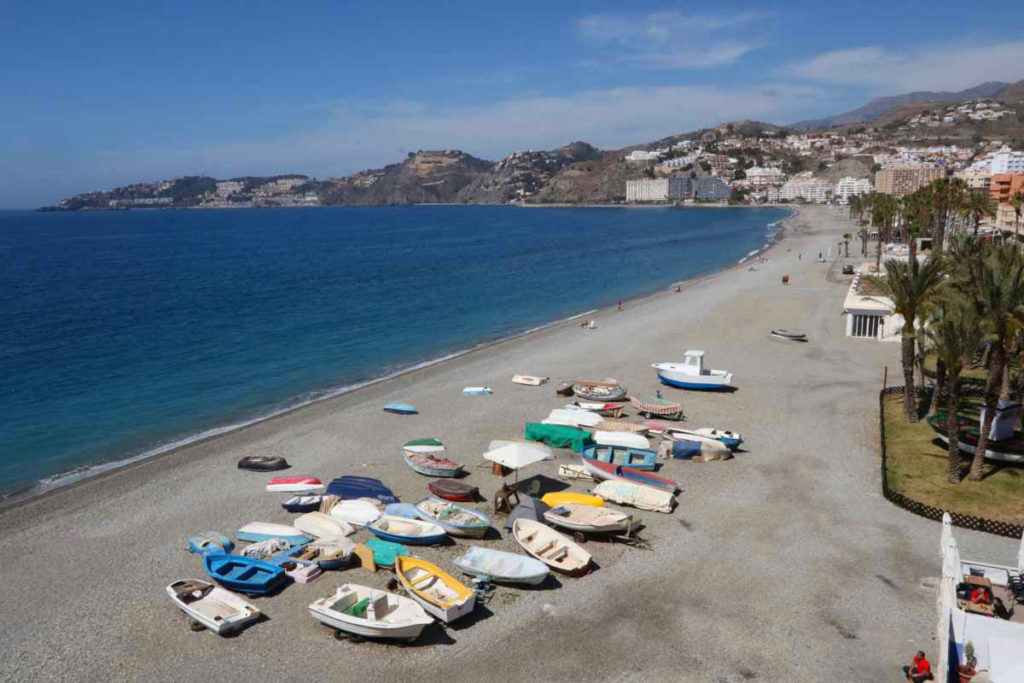
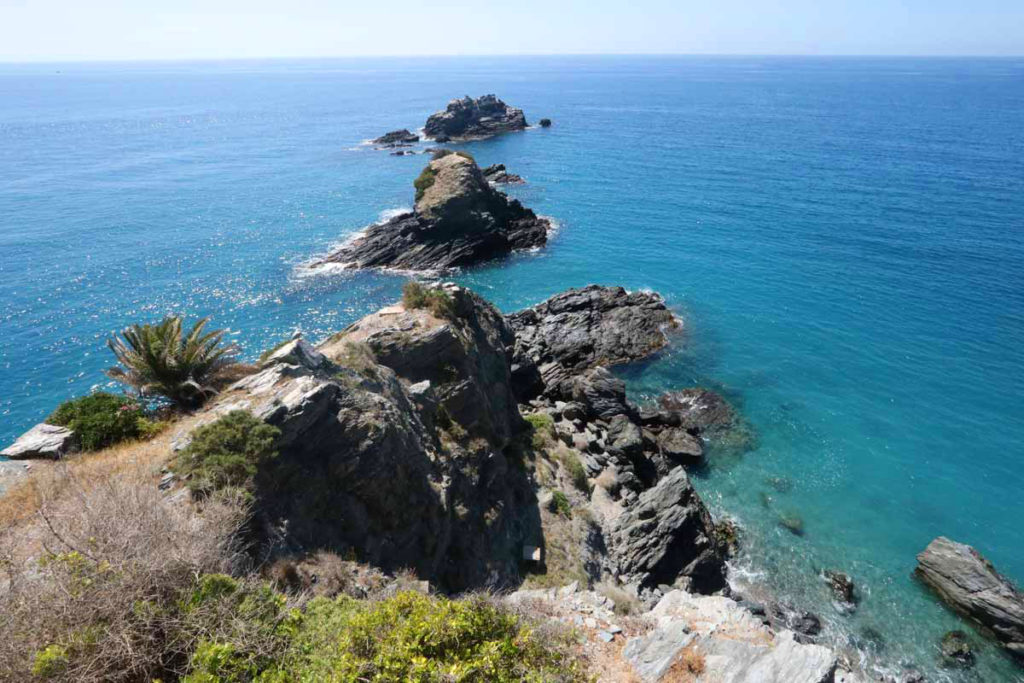
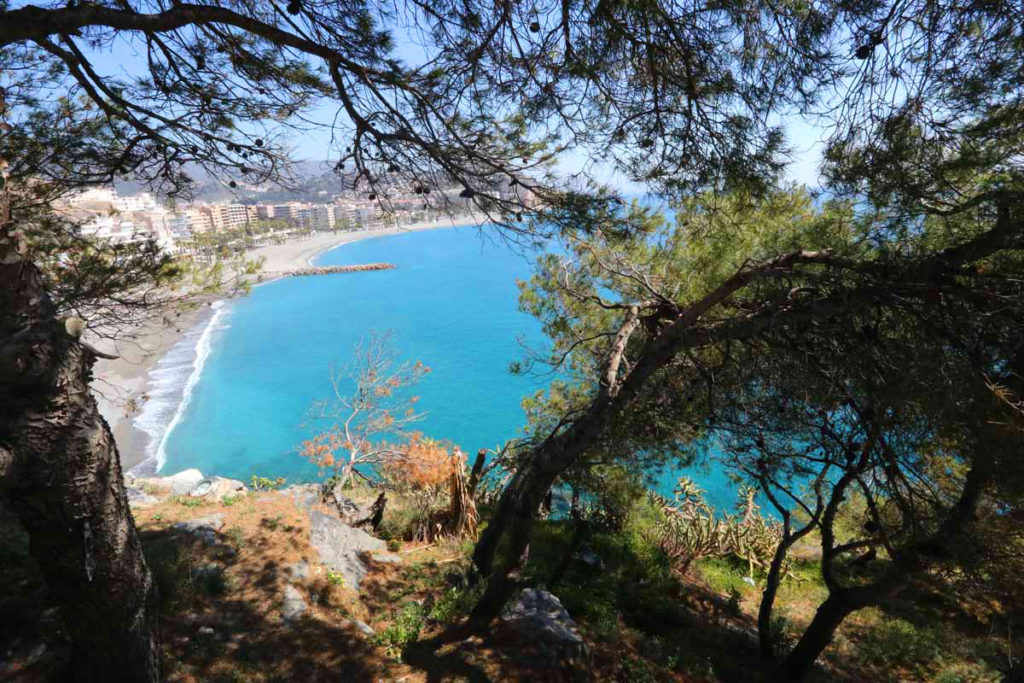
The Peñón has some history. It actually had an old Roman bridge connecting it to the fortress and you can still see the remains today.
The Peñón also marks the spot where Abderraman I landed in 755 – Abderraman I was the last surviving member of the Omayyad Caliphate dynasty in Damascus (an overthrow that would change the balance of power in the Middle East, making the new capital Baghdad). After coming ashore in Almuñécar he gathered followers and fought and defeated the Muslim leaders in power in Cordoba. He would establish himself as head of the dynasty that would rule Iberia for the next 800 years.
There is a huge statue of Abderraman I at the base of the Peñón.
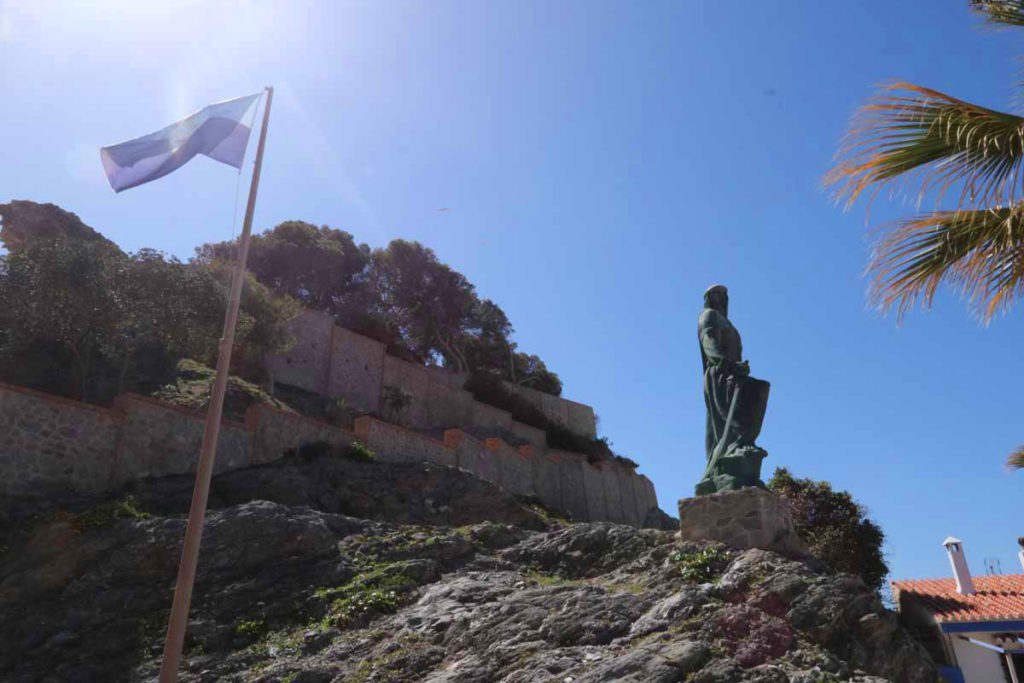
Majuelo Botanical Park
A pretty park below the castle. Here you’ll find the unearthed remains of the Phoenician/Roman fish factory mention above (in the history section).
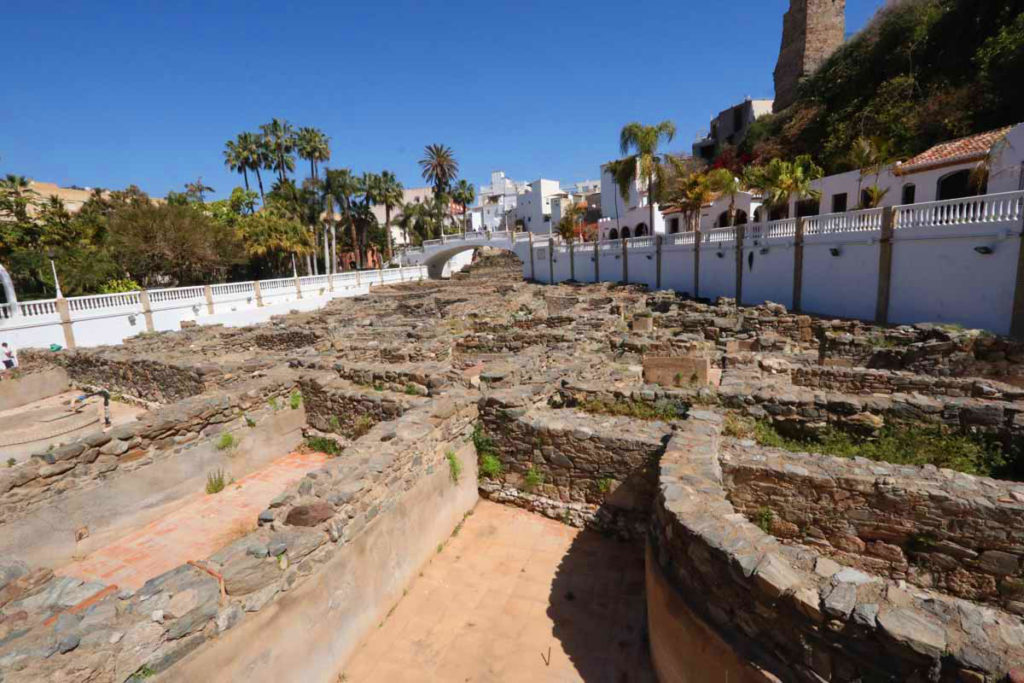
A large park with lots of beautiful plants and flowers. I read that it has 200 species of tropical plants from all parts of the world (Central and South America, Africa, the Philippines and New Zealand…)
The park also has little houses called “province houses” – they make and sell art from different parts of Spain.
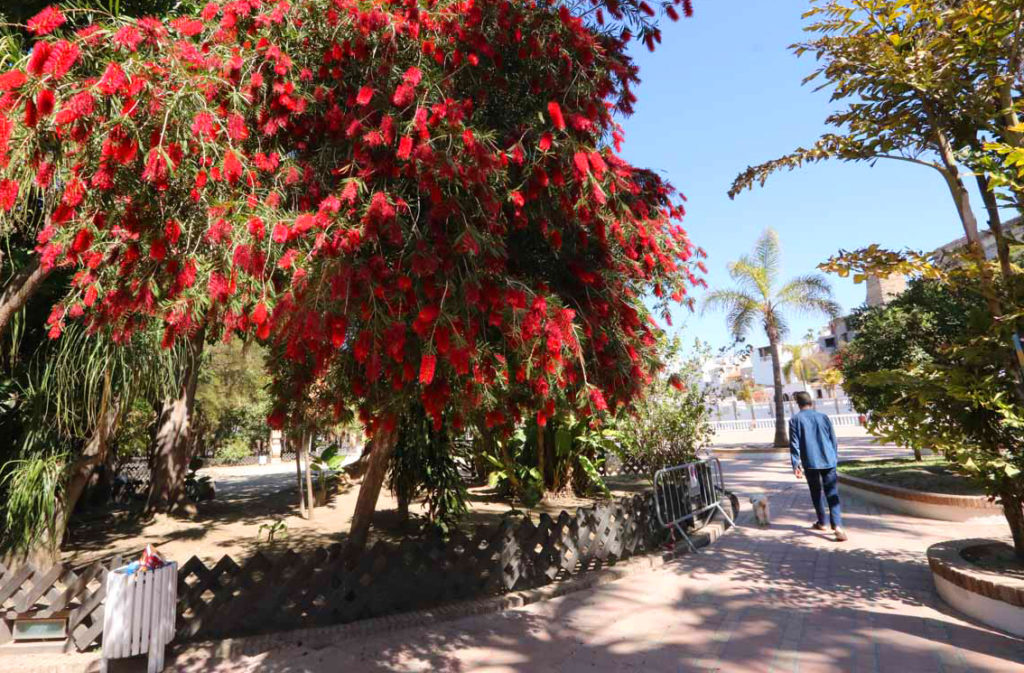
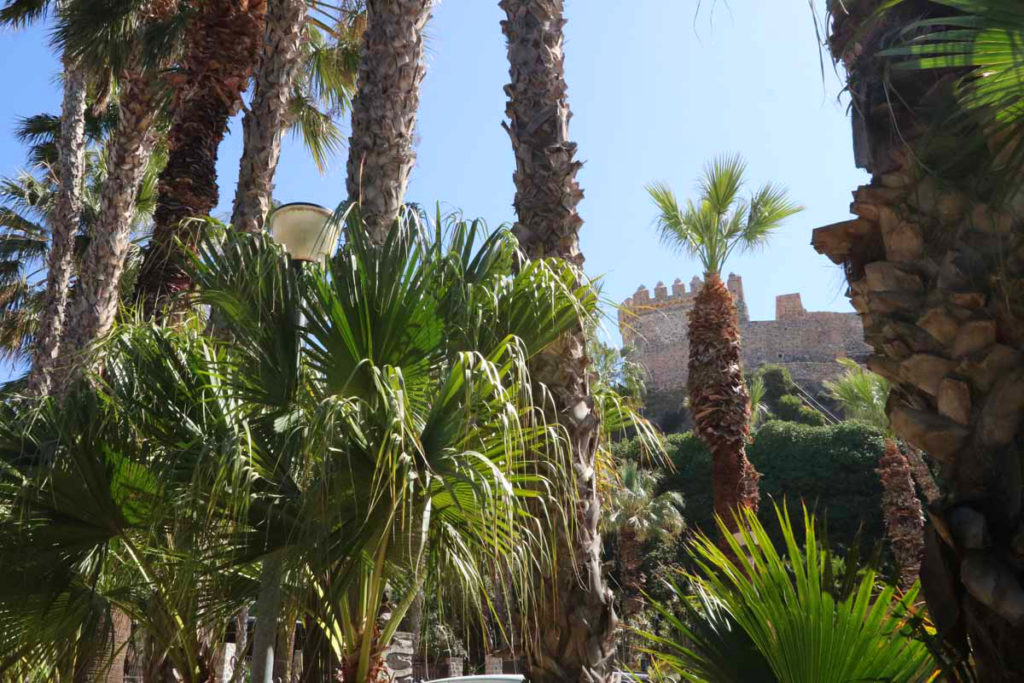
Roman Aqueduct
Almuñécar has remains of an aqueduct built by the Romans which dates from the 1st century BC. What’s left today is in 5 sections. We saw Section 5 which is downtown steps away from the bus station. It’s interesting…but I’ve read that the most interesting part of the aqueduct is Part 3 in a place called “Parque de Acueducto” (you can google its location). It’s about 15 minutes from downtown Almuñécar and looks like this:
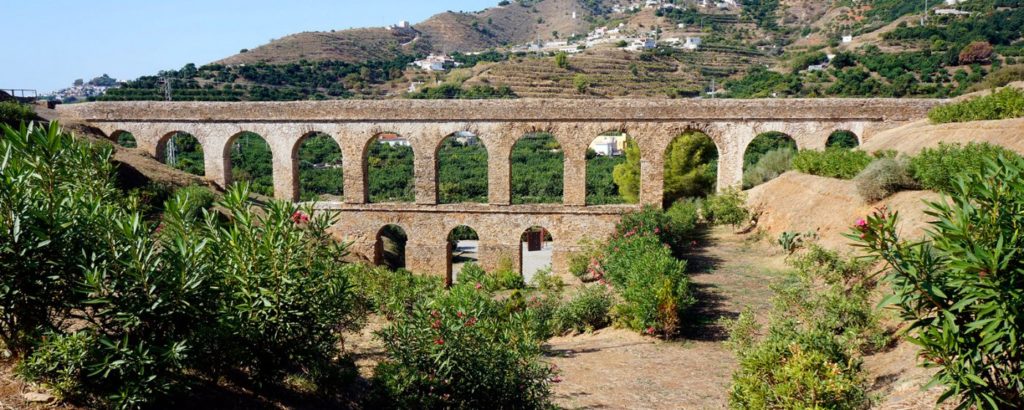
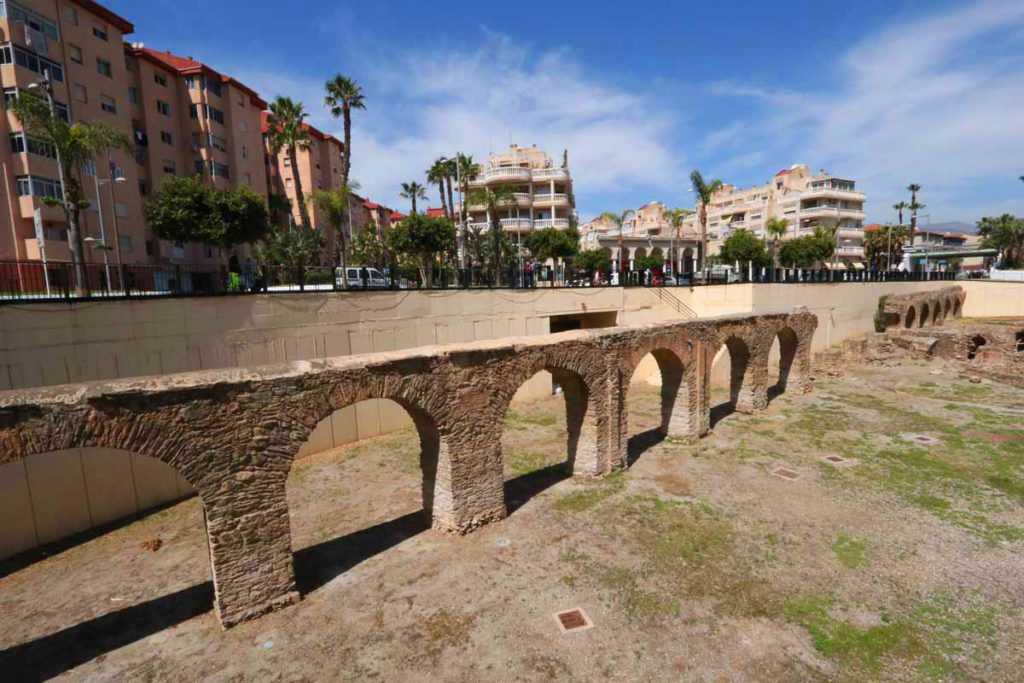
Parroquia de la Encarnación
Finally there’s the Parroquia de la Encarnación. It’s not the most exciting church you’ll ever see (if comparing to many of Spain’s incredible churches) but for a town of this size it’s large and quite pretty. Dating from the late 1500’s it stands on Phoenician and Roman ruins.
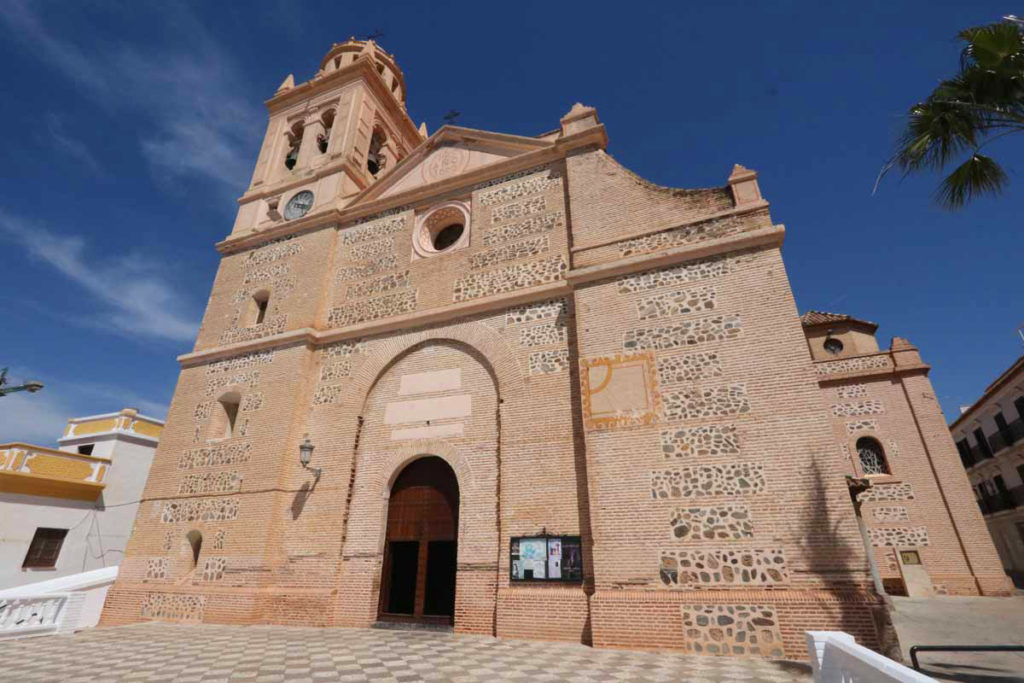
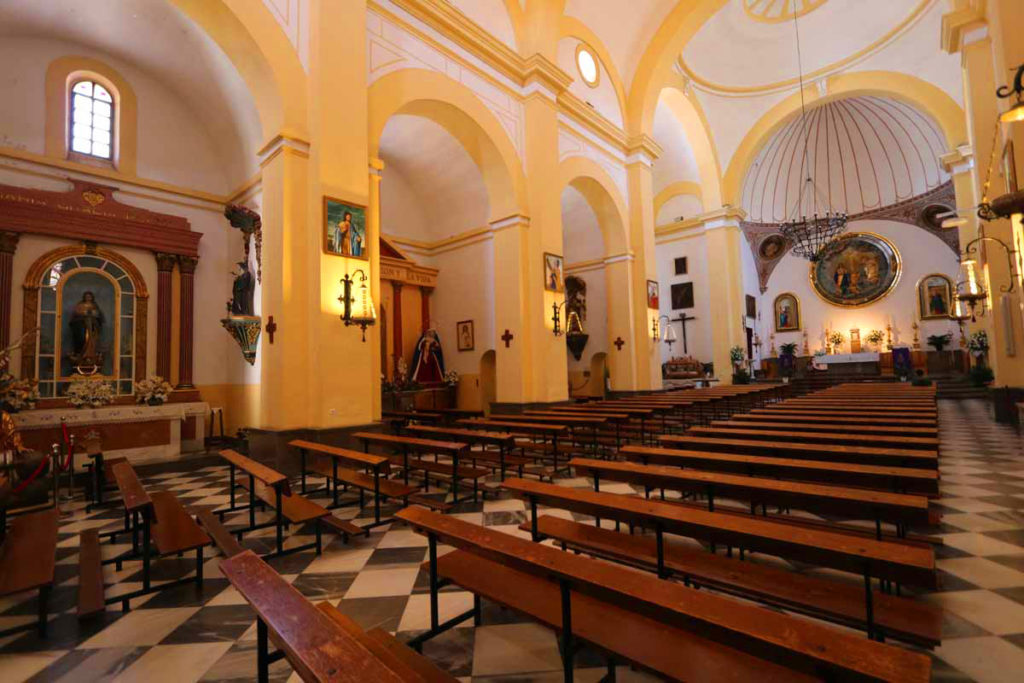

A few useful Resources
Private health insurance in Spain. We recommend Innoinsure, they make it easy. And you don’t need a Spanish bank account – you can pay with foreign credit cards. More info here.
Spartan FX. Buying a house or car in Spain and need to transfer and exchange a large sum of money? More here.
Wise. For everyday transfers and exchanges of money from your home country. Nobody should be using banks anymore. More here.
Impressions of Almuñécar (and comparing it to Nerja)
When we first arrived in Almuñécar we weren’t impressed. The center isn’t that pretty: architecture is modern and not that attractive, buildings are high, it all feels very tight with it’s narrow winding streets. I used Google maps to try to find our way to the castle and still somehow managed to get lost.
We found our way to the main beach and walked the pretty promenade, looking out over the wide beach. It all had a very relaxed, peaceful air. Making our away around to the Peñón, through Majuelo Botanical Park, and up to the Castle (up the steep back way because the easiest entry is through the center), Almuñécar started to charm us.
It was when we came back from the castle and climbed the Peñón that Almuñécar really got under our skin. The smell of the pine strees which brought back memories of Croatia, the incredible views at the top which (I’m sorry) far surpass the views in Nerja. The water and beaches in Almuñécar have a turquoise color that you don’t see in Nerja. It is beautiful. We enjoyed walking the beach promenade and the peacefulness of it all.
As I say, the center isn’t as attractive as Nerja’s. But we found our way down a busy center street (calle Baja del Mar) which has a lot of local life and stumbled upon the Pilar of Felipe II, a fountain dating back to the 16th century. Continuing on, we arrived at the Plaza de la Constitución which (I’m told) marks the center of the historical center. We found it charming.
Almuñécar feels more authentically Spanish than Nerja. You see a lot more young people, there must be a few schools in town. There are expats but they seem to be in smaller numbers and more varied (when we arrived at Plaza de la Constitución we saw a large outdoor restaurant with German menus. We’ve seen that in Torrox but not Nerja).
I have to admit we ended up really liking Almuñécar. It charmed us and we really ended up enjoying our visit to the town.
Related: The Best Day Trips from Nerja
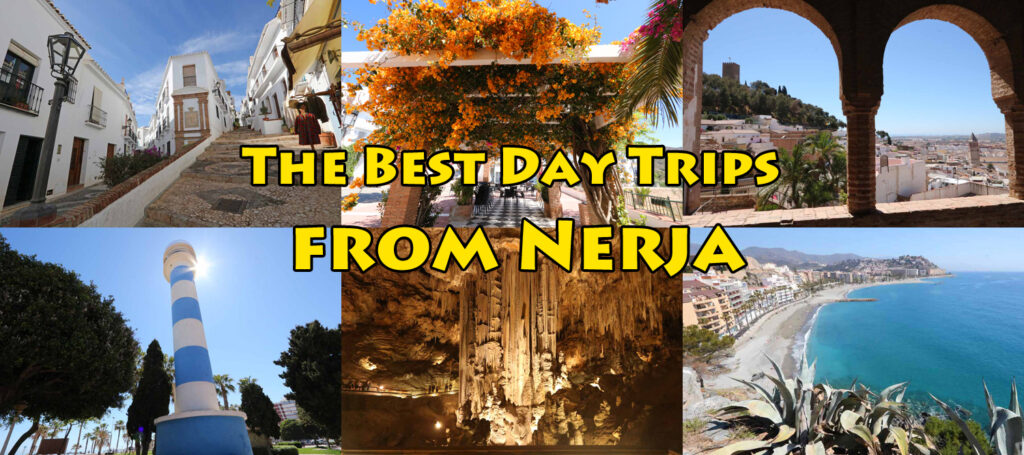
Related: What’s it like living in Almuñécar? (and why it didn’t work out for this couple)
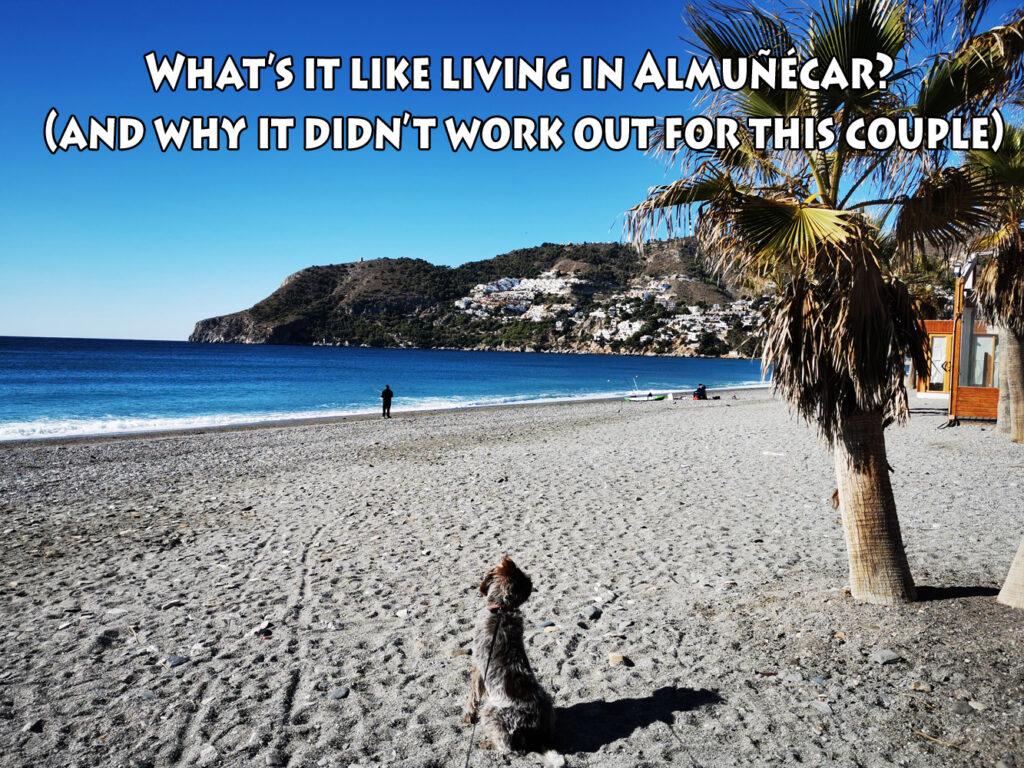
Related: What’s it like living in Nerja? The Pros and the Cons
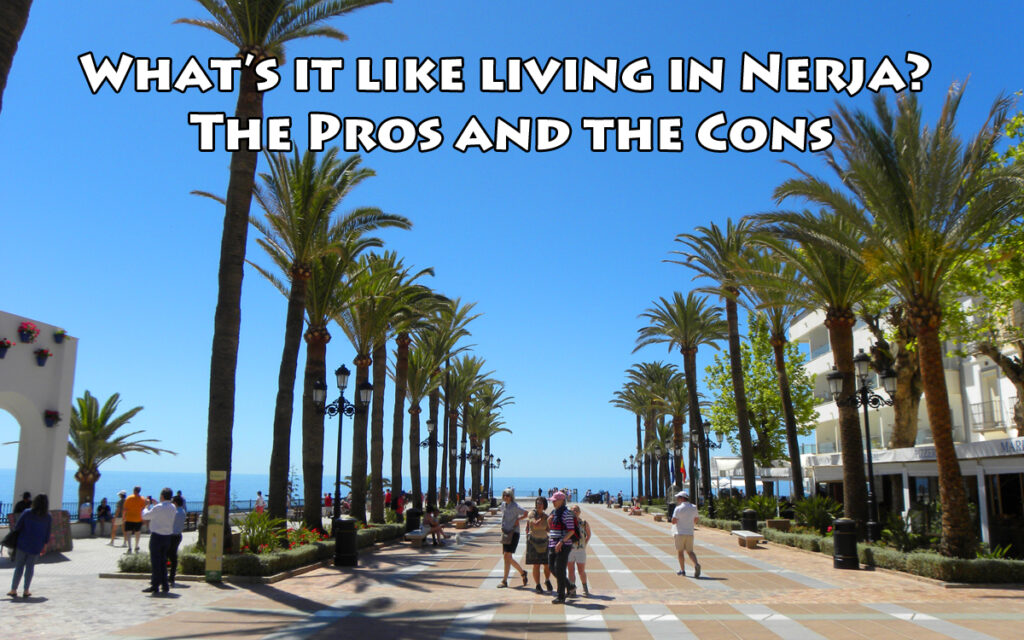

Very nice, we live here since a couple of months.
Maybe you can visit us the next time you come here?
We start a new activity around our avocado finca, an aroma tour with a scented workshop in it.
Check it on http://www.todoalmunecar.es
Thank you Jorje. I’m afraid we no longer live in Nerja, we’re a bit further away now. But thank you for your offer.
Love Almunecar- quiet but culturally. Close to hiking areas- close to Granada ski in the mountains and swim in the sea- all in one day if you want.
hello, We are planning to land and explore the Granada area south of the city in the Spring. The hills ,mountains near by and coast not far are appealing. This will be a search for a place settle in retirement and will be shipping belongings and leaving California! I lived in Granada, (in the Albaicin) as a student years ago, have Spanish family and language. We love the idea of a ruralish house near a town. We would love to look you up in Granada.
I am wondering why you did not consider Almuñecar as a place to settle?
Cristina and Hans
Hi Cristina and Hans. Almuñecar is nice – but I think, for now at least, that we prefer being in a city instead of a coastal town. We get bored easily and there’s not much to Almuñecar and it’s far from everything. Granada we can hop on a train and even have an airport nearby. It just has more to keep us entertained.